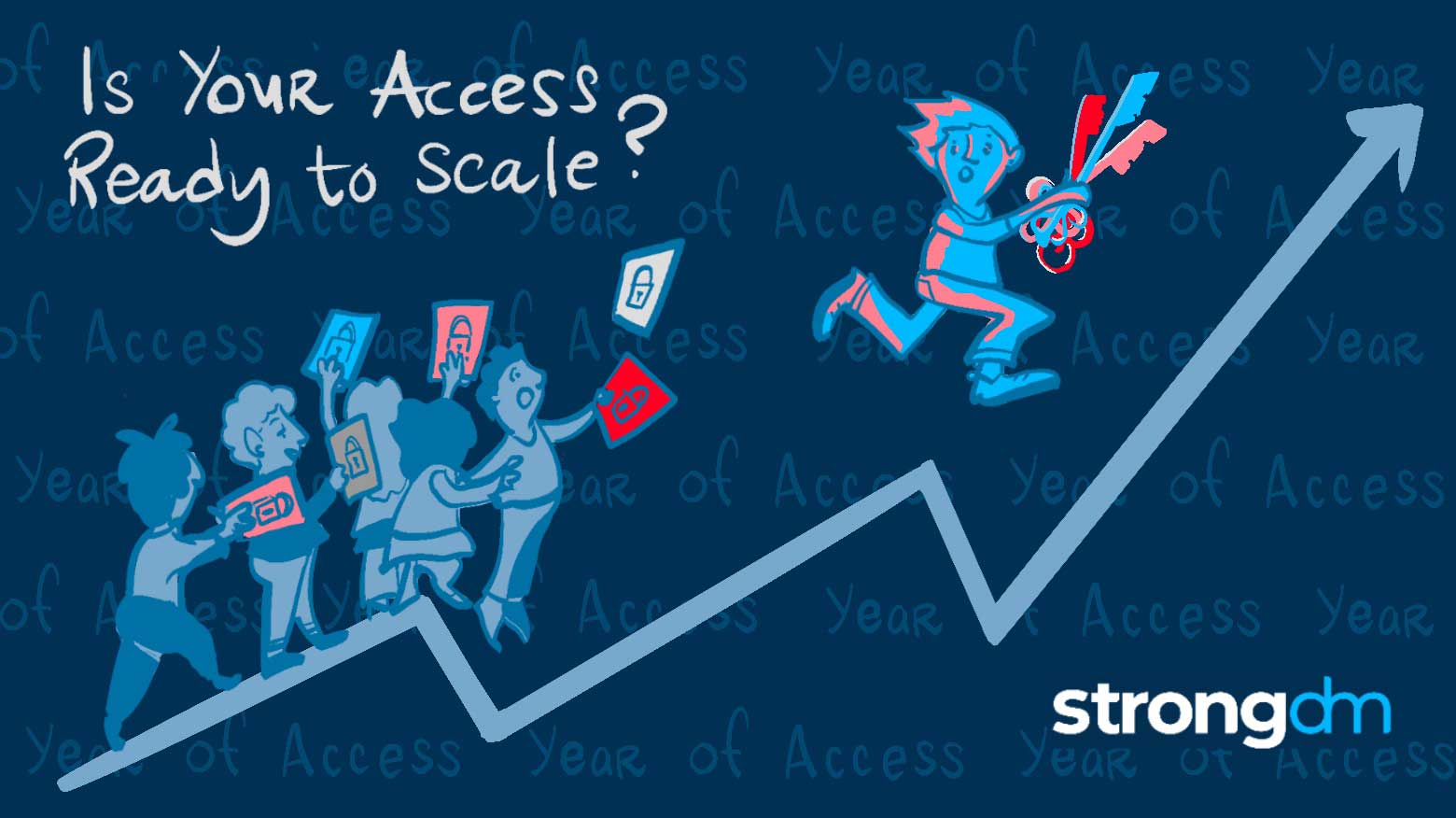

Written by
Maile McCarthyLast updated on:
May 11, 2022Reading time:
Contents
Built for Security. Loved by Devs.
- Free Trial — No Credit Card Needed
- Full Access to All Features
- Trusted by the Fortune 100, early startups, and everyone in between
Current approaches to access worsen as organizations grow and scale. One-off permissions and a patchwork of tools and scripts may work well enough in the startup days, but facilitating access quickly surpasses human scale even before a company becomes mid-sized.
Onward and Upward?
Growth often starts slowly. New technical hires trickle in–more engineers, a data analyst, maybe someone who thinks about security. Admins provision access as needed, keeping a mental map of the infrastructure and who has access to what. Manually granting and approving access adds a little busy work to the day, but the task remains manageable until...
The size of the organization doubles. Twice. As an admin, you spend half the day granting access requests, and it’s still not enough. Employees from far-flung departments need to connect to data and technology. Engineers, of course, but also marketers, product managers, salespeople. And just when you finally get a handle on things, the company announces a new round of funding (i.e., another ramp-up in hiring).
Old-school access management techniques just can’t keep up.
Already Feeling the Strain
Smaller companies are already feeling the strain. The report 2022: Year of Access found that 88% of all organizations require an access request to go through two or more employees. In larger organizations, the problem gets even worse.
In companies with 1000+ employees:
- 43% involve 4+ people in granting access, nearly double the average.
- 2 out of 3 require hours or days for access to be approved and granted.
- Approximately 60% say granting access is one of their biggest challenges.
This amounts to time spent with technical resources not being fully utilized and significant overhead for everyone involved. And for growing startups, merging ventures, and companies heading toward IPO, the problem is even more of a burden.
Can You Track the Limitless Stack?
It’s hard to use what you can’t see. In an era of limitless resources, ephemeral infrastructure, and multi-cloud environments, it can be difficult for anyone (machine or person) to map it all out. In fact, three out of five enterprise users report that the time it takes to request/grant access to systems or data is one of the biggest challenges they face.
Without the proper tools for tracking your environment, this explosion of resources creates a clash between security and productivity, making infrastructure access incredibly cumbersome for the people who need it to do their jobs. Add auditing and regulatory compliance to the picture, and you’re left with wasted time, diminished output, and a loss of day-to-day happiness for valuable employees.
But complexity itself isn’t the problem. Modern cloud environments also increase flexibility. Employees can access the resources they need (and the ones they want!) without being limited to a single platform. And they can connect from anywhere–the office, a coffee shop, even an airplane.
There needs to be a way to scale your stack and access it too. That’s why StrongDM brings together authentication, authorization, networking, and observability onto a single platform. It enables fast, intuitive, and auditable access to your entire stack for every member of your team, even as you grow and scale.
Are you scaling your organization and looking for a better way to manage access? Check out the full report, 2022: The Year of Access. Then schedule a free demo of StrongDM to see how you can upgrade your access management today.
Next Steps
StrongDM unifies access management across databases, servers, clusters, and more—for IT, security, and DevOps teams.
- Learn how StrongDM works
- Book a personalized demo
- Start your free StrongDM trial

Categories:

About the Author
Maile McCarthy, Contributing Writer and Illustrator, has a passion for helping people bring their ideas to life through web and book illustration, writing, and animation. In recent years, her work has focused on researching the context and differentiation of technical products and relaying that understanding through appealing and vibrant language and images. She holds a B.A. in Philosophy from the University of California, Berkeley. To contact Maile, visit her on LinkedIn.
You May Also Like




